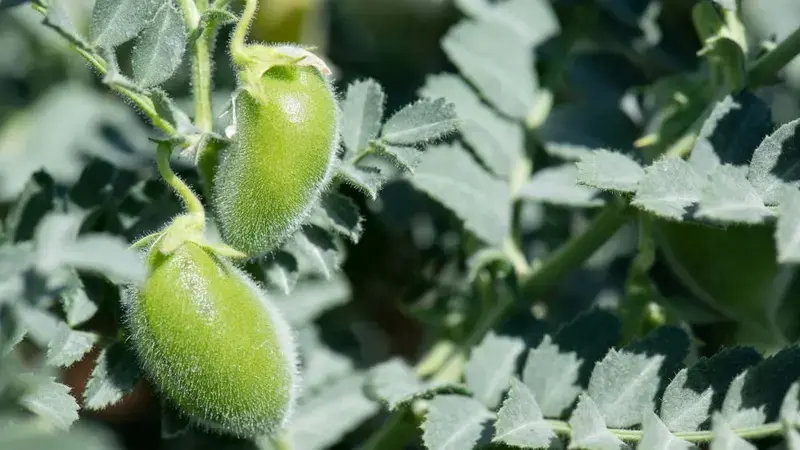Cold- and Disease-Tolerant Winter-Sown Chickpea Varieties

- Aladdin Hamwieh - Breeder, Biotechnologist and Egypt Country Manager
- Akmal Akramkhanov - Senior Scientist - Sustainable Land Management
- Hassan Machlab - Lebanon, Jordan & Palestine Country Manager
ICARDA scientists developed packages of improved winter-sown chickpea varieties and better production practices for improved farmer incomes.
Chickpea is a staple crop that brings major economic advantages to smallholder family-farm households across Central, West Asia, and North Africa (CWANA). It is a reliable source of income and can act as a nutritious alternative to meat protein either within households and for market consumers. Chickpea also improves soil quality when rotated as a break crop in conventional cereal-dominated farming systems.
Despite these advantages, chickpea yields in the region are low because the farmers often sow chickpea in spring due to its low resistance to Ascochyta blight and cold temperatures, and they are often uninformed about best winter sowing practices. Although spring sowing avoids cold damage as well as winter-related diseases and weeds, spring rainfall is regularly inadequate for the crop, and temperatures can conversely be too high causing the damage of the terminal drought, especially as climate change disrupts weather patterns. The result of these combined factors means that chickpea yields can decrease by 50-80 percent and this is steadily increasing due to intensifying climate change.
Due to the drawbacks of spring sowing, and to optimize winter rainfall, ICARDA developed an integrated winter sowing package as a better alternative. The innovation package includes improved Ascochyta blight resistant-and-cold-tolerant chickpea seed varieties with bred-in traits that address specific needs of the regions. It also includes training courses for farmers in better production practices such as improved winter sowing, crop rotation, and conservation agriculture.
The innovation packages were first scaled out in Syria in collaboration with the Directorate of Agricultural Extension and General Commission of Scientific Agricultural Research (GCSAR) and the Syrian Ministry of Agriculture. To improve adoption rates of the new varieties, ICARDA scientists then invited farmers to identify their region-specific challenges to winter-sown chickpea, as well as to contribute performance data for further ICARDA development of the new varieties. This rolling research along with field-days and training courses constantly updates practices and addresses challenges, while building trust with key family-farming communities.
The new varieties were also applied by farmers across the Mediterranean Basin to analyze performance and gather data on region-specific challenges, with an aim to scale out the new varieties across all dry regions with tailored varieties and training packages that guarantee their real-world success.
-------------------------------------------------------------------------------------
IMPACT
-
By rotating with cereal crops, over double the biological nitrogen fixation in the soil was obtained, essential for future plant growth and the sustainability of the ecosystem.
-
Syrian farmers recorded a yield increase of 32% along the coastal plain, the coastal mountains, and the Hauran region in the south (Zone 1) and 18% in drier areas in the east and south behind the western mountains and across the Jazirah (Zone 2) in Syria.
-
The range of yield increases of Winter-sown chickpea compared to spring-sown chickpea in Syria was 33-54% in Zone 1 and 9-61% in Zone 2 depending on rainfall and other climatic conditions.
-
The yield advantage of winter-sown chickpea over spring-sown chickpea has now been demonstrated by ICARDA in all countries of the Mediterranean basin. If widely adopted, this could result in 500,000 tons of additional annual production in the Mediterranean region.
